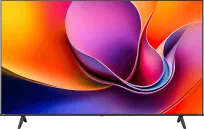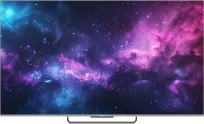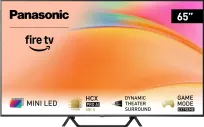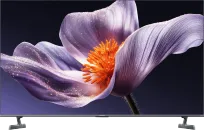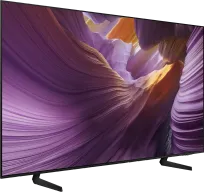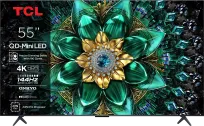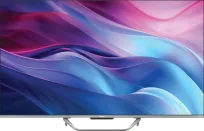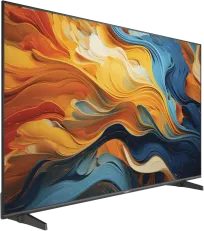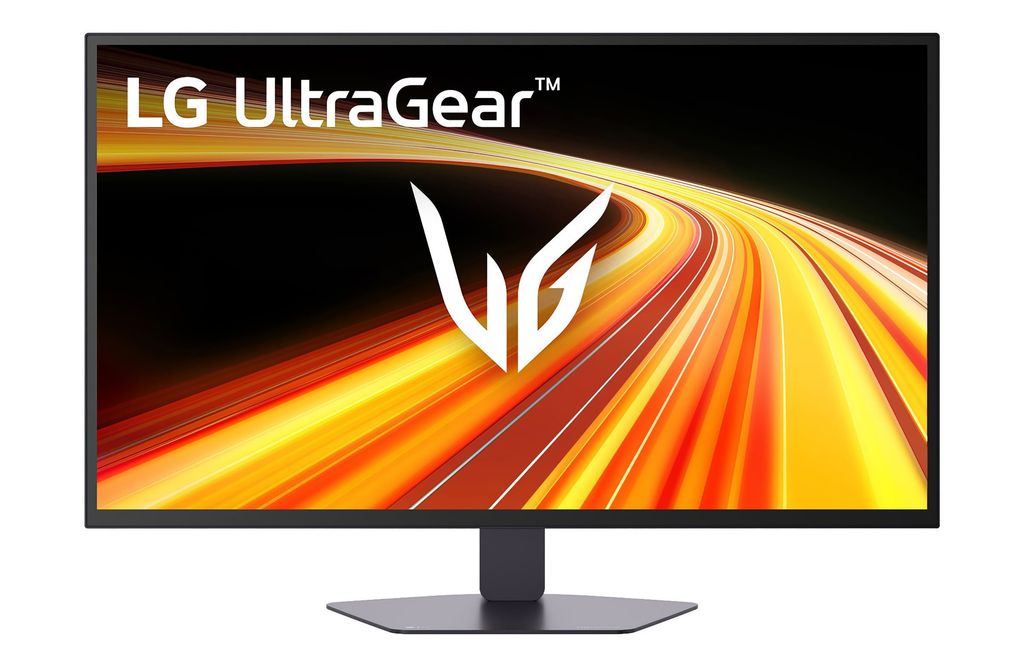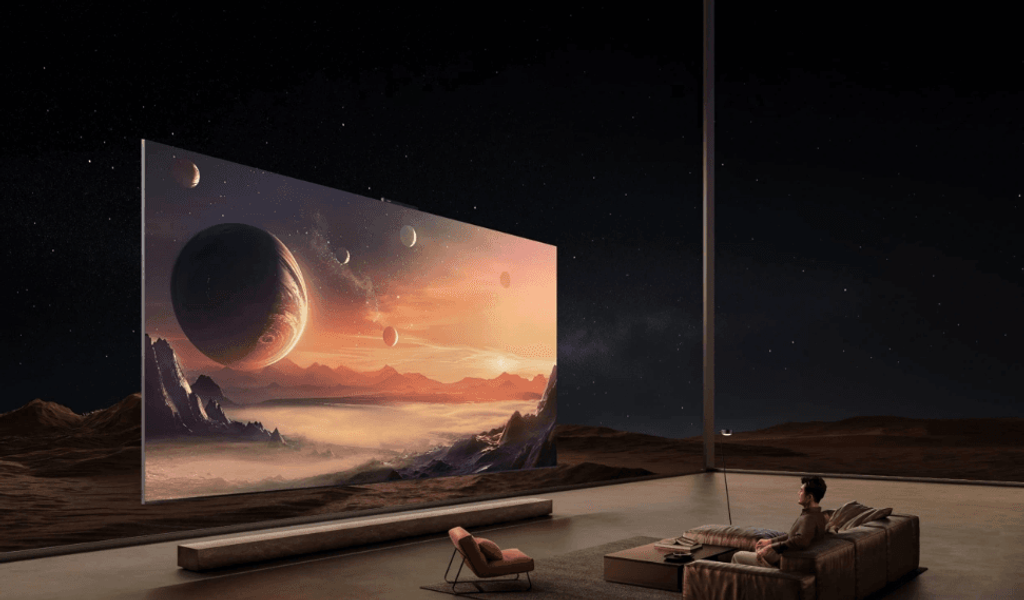
Today we once again take a look across the ocean (thanks to the RTINGS editorial team) to see what's happening with the Japanese giant. Sony is launching the Bravia 5 – a model that formally replaces the well-received X90L. At first glance, we get everything one might expect from a mid-range "premium mid-tier": a VA panel, local dimming, 120 Hz, and a gaming package with Google TV on board.
But there's something new as well – Mini LED backlighting, which replaces the classical FALD zones known from the X90L. This is a change that could open the door to better contrast and precision in dimming. The question is whether Sony has truly taken a step forward... or merely changed the label? How does the Bravia 5 compare to its predecessor – and does it have what it takes to compete with the ever-improving competition from China and Korea? Let's find out!
Appearance: Once again, no surprises




“Designer déjà vu” – this is probably the best way to describe what Sony (and not only Sony) has provided us with in 2025. The Sony Bravia 5 looks almost identical to the X90L, which is already two years old. Slim bezels, the same minimalism, and really only the colour may be slightly different... but to be honest – as the author of this text, I must admit that the differences between “dark graphite” and “very dark grey” remain a mystery to me. Anyway – the effect at first glance is practically the same.
But while not much has changed on the outside, the internal design decisions are somewhat more surprising. The Bravia 5 has been slightly simplified compared to the X90L – this is evident in the stand. While the previous model allowed for the legs to be positioned wide or centrally, now we only have one option – the legs are positioned in the middle. Fortunately, the option to elevate them has not been removed, so a classic soundbar will fit comfortably under the screen.
Construction of the 98-inch version: thicker frames, greater stability?


In conclusion – although the television is not record slim and rather adheres to Sony's raw style, it can still be appealing. It is neat, without unnecessary embellishments, and the whole thing gives the impression of a sturdy piece of equipment for years to come. It is also worth mentioning that, similarly to the X90L, we cannot refer to "framelessness" in the largest 98-inch variant. In this size, the Japanese manufacturer decided to "stiffen" the construction by using thicker bezels. Does this translate to better rigidity of the entire body? Perhaps – but it's good to keep this in mind when considering the largest model, especially if someone pays attention to the appearance of the device as well.
Contrast: Mini LED – more zones, but the same quality?
According to what Sony announced in promotional materials, and as RTINGS confirms in tests – the Bravia 5 has received the long-awaited change in backlighting. In the 65-inch variant, almost five times more dimming zones have been implemented than in the X90L model, which was still based on traditional FALD backlighting (which works like MINI-LED but has far fewer zones). This is great news – especially since the biggest issue with the X90L was the noticeable blooming effect, for example, when displaying bright text on a dark background (in the gallery: comparison of X90L vs Bravia 7 with Mini LED, the image speaks for itself).


Contrast: What went wrong?
And everything would have been wonderful, were it not for one “but”. As we have mentioned before – the specifications alone are not enough for quality to come automatically. The way in which the manufacturer tunes the entire system also matters. And we are talking about Sony – a company that has proven more than once that it can squeeze the maximum out of even weaker equipment. However, this time... something went wrong. Despite a significantly greater number of zones, the Bravia 5 achieves almost the identical contrast result as its predecessor. Differences? There are, but only in certain, laboratory scenarios. In everyday use, the television looks practically the same as the X90L. And that doesn’t sound like praise. It’s a pity, because the potential was really substantial, after all, we are talking about a fully-fledged MINI-LED television.
Brightness and HDR – but what actually happened here?
Well then – since the contrast with the new Mini LED is practically the same as in its predecessor, perhaps at least the brightness has improved or is at the same level as the X90L? Let's recall: the previous model, according to our tests, could achieve around 1200 nits (HDR) in a 10% window, which was truly an excellent result in this class, especially for movie fans.
And here... such a number. The Bravia 5, despite the newer backlight technology, records a result around 700 nits. Yes, you read that right – not only is it not better, but it is almost twice as dim as the model from 2023! What did Sony do? Why? How on earth? It's hard to say. Because no documentation, no presentation, and no press release explains this result. Instead of evolution – a regression. Instead of a “wow” effect – a “why?!” effect. And all of this in a television that was meant to be an extension of the X90L concept, not its faded version.
Scaling and Image Processing – Here Sony Still Delivers
Fortunately, there are things that Sony hasn't ruined. In fact, they still do them probably better than anyone else in the world. We're of course talking about image processing. The Bravia 5, like its predecessor, utilises the same tried and tested "XR" image processor – and the results are almost identical. Which means? Excellent.
Content in lower quality, such as classic television, YouTube, or Full HD materials, appears better than one might expect. Scaling works smoothly, cleanly, and without any artifacts. This is certainly not magic – the television won't conjure a reference-quality 4K image from an HD signal – but it does it well enough that you can forget how low quality the original was.
In this aspect, the Bravia 5 still performs remarkably well – and it remains a reason to consider a Sony television in this segment. Especially if someone watches a lot of online content or classic TV channels.
GoogleTV and eco remote


Just like its predecessor, the Bravia 5 runs on the Google TV system. This is good news; we have access to the largest number of apps on the market, so neither the hardware nor the manufacturer restricts the user. Netflix, YouTube, HBO Max, Disney+, niche VOD services, podcasts, and even TV channels – all available from a single platform. Moreover, as is often the case with Sony, we can expect that Google TV will operate exceptionally stably here. At least at the start – in the past, it was this brand of televisions that coped best with the "growing pains" of the new system, which could plague other Android models.
The set also includes a new (or rather... familiar) remote. Made from recycled materials, in line with the manufacturer's "eco-friendly philosophy," and devoid of traditional numeric buttons. This has almost become a standard in new televisions – the minimalism that Samsung initiated a few years ago is now the norm. Is this a good direction? It's hard to say. Some prefer simplicity, as they only use the "up, down" arrows, while others long for the classic layout with a full set of buttons.
Is it really "perfect for PS5"?
Sony has been promoting its televisions as "perfect for PS5" for several years now – and of course, the Bravia 5 is no exception. On paper, everything looks familiar and quite good: we have ALLM mode (which means automatic switching to low latency), VRR technology, and two HDMI 2.1 ports that support 4K at 120 Hz. The panel itself also operates at 120 Hz – similar to its predecessor, thankfully nothing has been downgraded here 😉.
Additionally, Sony adds something extra – the PS Remote Play app, available only on their televisions. It allows you to connect to the PS5 console without physically plugging it into the television – for example, from another room.
Unfortunately, not everything performs equally well. As noted by the Rtings editorial team, the mode designed for gamers in the Bravia 5 features quite a noticeable motion blur and image smearing effect. This is not something we would want to see on a television marketed as "gamer-friendly". We hope that Sony will respond and improve this aspect in updates...
Sony Bravia 5: the successor that forgot... to be better?




Bravia 5 is a television that in theory was meant to be a natural development of the popular X90L. Sony added Mini LED, increased the number of dimming zones, retained a good processor, the Google TV system, and all the features for gamers. Everything suggested it would be better. And yet... it is not.
Contrast? Almost identical to its predecessor with a significantly smaller number of dimming zones. HDR brightness? A drop of nearly 40%. Game mode? Blurring and ghosting that shouldn't occur. And although the Bravia 5 looks solid in terms of hardware, the impression remains as if Sony opted for minimal changes and hoped no one would notice. Fortunately, there are elements that still do a great job – image processing, scaling, interface smoothness, and Google TV apps remain the strong points of this brand. But in the context of the entire market offering – and the growing competition from TCL, Hisense, or Samsung – it is hard not to feel that the Bravia 5 is somewhat of a missed opportunity.
So if you are considering the purchase of a Sony television, it is worth taking a look at the sales of last year's model X90L. According to the Rtings editorial team, it performs better than the Bravia 5 in practically every category. An alternative could also be the better model – Bravia 7, which at the time of writing this text costs almost the same as the Bravia 5, and in terms of image quality, it outshines not only the Bravia 5 but also the X90L in many aspects.
(You can find a link to the comparison of the best Sony televisions below.)
Source: own study, rtings.com
 Katarzyna Petru
Katarzyna Petru